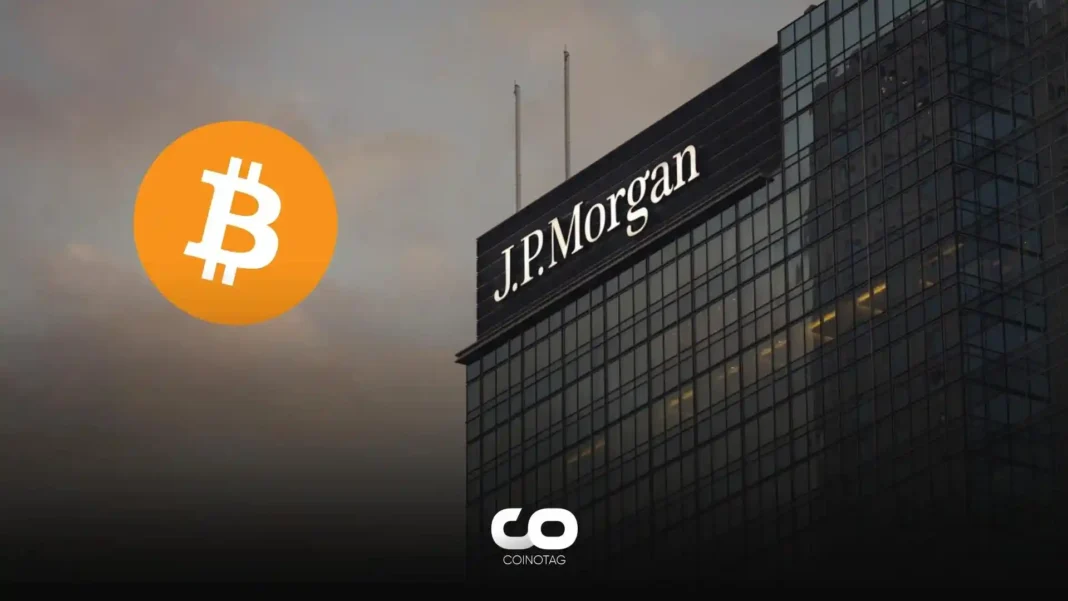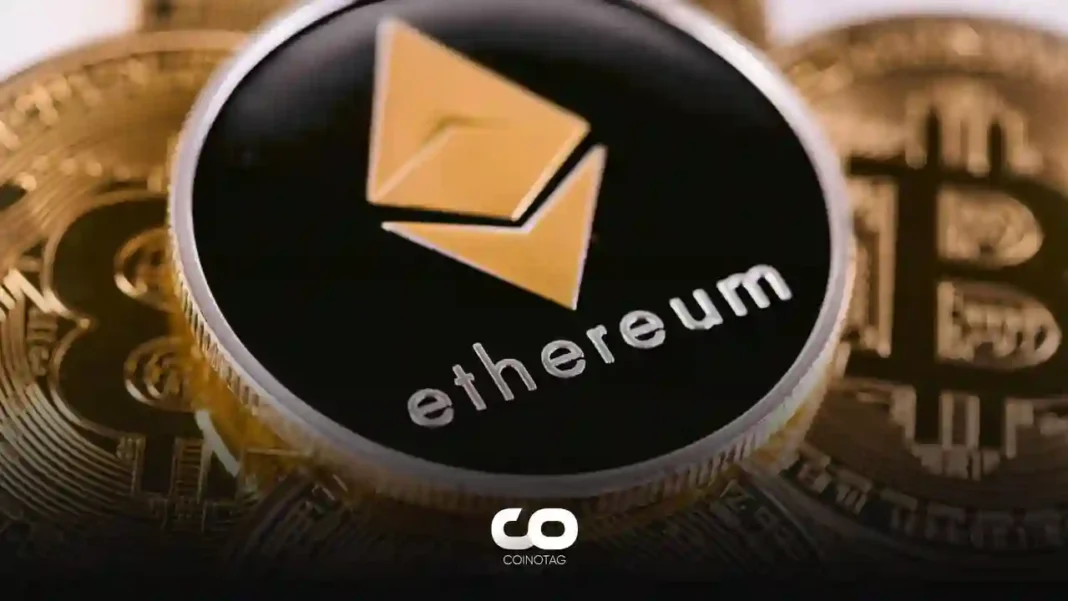| COINOTAG recommends • Exchange signup |
| 💹 Trade with pro tools |
| Fast execution, robust charts, clean risk controls. |
| 👉 Open account → |
| COINOTAG recommends • Exchange signup |
| 🚀 Smooth orders, clear control |
| Advanced order types and market depth in one view. |
| 👉 Create account → |
| COINOTAG recommends • Exchange signup |
| 📈 Clarity in volatile markets |
| Plan entries & exits, manage positions with discipline. |
| 👉 Sign up → |
| COINOTAG recommends • Exchange signup |
| ⚡ Speed, depth, reliability |
| Execute confidently when timing matters. |
| 👉 Open account → |
| COINOTAG recommends • Exchange signup |
| 🧭 A focused workflow for traders |
| Alerts, watchlists, and a repeatable process. |
| 👉 Get started → |
| COINOTAG recommends • Exchange signup |
| ✅ Data‑driven decisions |
| Focus on process—not noise. |
| 👉 Sign up → |
- JPMorgan notes a declining correlation between Bitcoin ETF flows and BTC price movements, with recent figures dropping significantly.
- In January, the correlation peaked at 0.84, but recent analysis shows a reduction to 0.60, indicating a shift in market dynamics.
- “A number above 0.70 is considered highly correlated,” explains JPMorgan’s Ken Worthington, highlighting the change from “highly” to “moderately” correlated.
JPMorgan’s analysis reveals a diminishing correlation between Bitcoin ETF inflows and the cryptocurrency’s price movements, suggesting a potential shift in how ETFs influence Bitcoin’s market dynamics.
Changing Dynamics in Bitcoin ETF Market
According to JPMorgan analyst Ken Worthington, the once-strong correlation between Bitcoin’s price movements and the flows in and out of spot ETFs has weakened. On February 7, the correlation was at 0.78, but by the end of the month, it had decreased to 0.60. This marks a significant shift from January’s peak correlation of 0.84, indicating a potential change in investor behavior or market dynamics influencing Bitcoin’s valuation.
Impact of Inflows on Correlation
Last week saw a record $2.4 billion influx into Bitcoin ETFs, the largest in their brief history, primarily into BlackRock’s IBIT and Fidelity’s FBTC. These inflows, nearly reaching $11 billion in assets under management (AUM), suggest that while investment interest remains high, the direct impact on Bitcoin’s price may be evolving. This shift could indicate that the market is maturing or that other factors are beginning to play a more significant role in determining Bitcoin’s price.
Price Leads, Flows Follow
The analysis suggests that Bitcoin’s price movements in early February, which saw sharp gains, may have been a leading indicator for the surge in ETF inflows. However, as the price began to level off, the inflows into these funds softened, suggesting a reactive rather than proactive relationship between price gains and investor interest in Bitcoin ETFs.
| COINOTAG recommends • Professional traders group |
| 💎 Join a professional trading community |
| Work with senior traders, research‑backed setups, and risk‑first frameworks. |
| 👉 Join the group → |
| COINOTAG recommends • Professional traders group |
| 📊 Transparent performance, real process |
| Spot strategies with documented months of triple‑digit runs during strong trends; futures plans use defined R:R and sizing. |
| 👉 Get access → |
| COINOTAG recommends • Professional traders group |
| 🧭 Research → Plan → Execute |
| Daily levels, watchlists, and post‑trade reviews to build consistency. |
| 👉 Join now → |
| COINOTAG recommends • Professional traders group |
| 🛡️ Risk comes first |
| Sizing methods, invalidation rules, and R‑multiples baked into every plan. |
| 👉 Start today → |
| COINOTAG recommends • Professional traders group |
| 🧠 Learn the “why” behind each trade |
| Live breakdowns, playbooks, and framework‑first education. |
| 👉 Join the group → |
| COINOTAG recommends • Professional traders group |
| 🚀 Insider • APEX • INNER CIRCLE |
| Choose the depth you need—tools, coaching, and member rooms. |
| 👉 Explore tiers → |
Broader Market Implications
The changing correlation between Bitcoin ETF inflows and market price raises questions about the future role of ETFs in the cryptocurrency market. As the relationship becomes less direct, investors may need to consider a broader range of factors when assessing Bitcoin’s market dynamics, including regulatory developments, technological advancements, and shifts in investor sentiment.
Conclusion
JPMorgan’s analysis of the declining correlation between Bitcoin ETF inflows and the cryptocurrency’s price suggests a complex interplay of market forces. As the cryptocurrency market continues to evolve, understanding these dynamics will be crucial for investors looking to navigate the volatile landscape of digital asset investments. The findings underscore the importance of monitoring not just inflows but also the broader market context in which these movements occur.
| COINOTAG recommends • Exchange signup |
| 📈 Clear interface, precise orders |
| Sharp entries & exits with actionable alerts. |
| 👉 Create free account → |
| COINOTAG recommends • Exchange signup |
| 🧠 Smarter tools. Better decisions. |
| Depth analytics and risk features in one view. |
| 👉 Sign up → |
| COINOTAG recommends • Exchange signup |
| 🎯 Take control of entries & exits |
| Set alerts, define stops, execute consistently. |
| 👉 Open account → |
| COINOTAG recommends • Exchange signup |
| 🛠️ From idea to execution |
| Turn setups into plans with practical order types. |
| 👉 Join now → |
| COINOTAG recommends • Exchange signup |
| 📋 Trade your plan |
| Watchlists and routing that support focus. |
| 👉 Get started → |
| COINOTAG recommends • Exchange signup |
| 📊 Precision without the noise |
| Data‑first workflows for active traders. |
| 👉 Sign up → |
| COINOTAG recommends • Members‑only research |
| 📌 Curated setups, clearly explained |
| Entry, invalidation, targets, and R:R defined before execution. |
| 👉 Get access → |
| COINOTAG recommends • Members‑only research |
| 🧠 Data‑led decision making |
| Technical + flow + context synthesized into actionable plans. |
| 👉 Join now → |
| COINOTAG recommends • Members‑only research |
| 🧱 Consistency over hype |
| Repeatable rules, realistic expectations, and a calmer mindset. |
| 👉 Get access → |
| COINOTAG recommends • Members‑only research |
| 🕒 Patience is an edge |
| Wait for confirmation and manage risk with checklists. |
| 👉 Join now → |
| COINOTAG recommends • Members‑only research |
| 💼 Professional mentorship |
| Guidance from seasoned traders and structured feedback loops. |
| 👉 Get access → |
| COINOTAG recommends • Members‑only research |
| 🧮 Track • Review • Improve |
| Documented PnL tracking and post‑mortems to accelerate learning. |
| 👉 Join now → |







